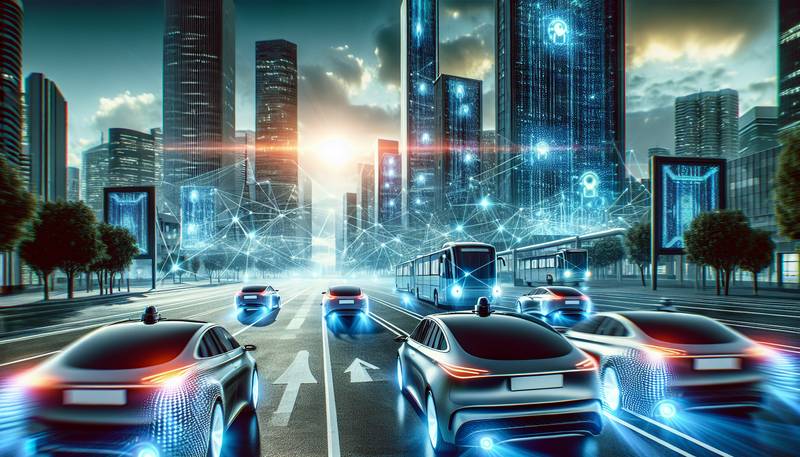Self-Driving Cars: Navigating the Future of Autonomous Vehicles

The Promise of Autonomous Vehicles
The concept of self-driving cars has captivated the imagination of people around the world for decades, and in recent years, the dream has inched closer to reality. With advancements in technology and increased investments, autonomous vehicles are poised to revolutionize the way we travel, promising safer roads, reduced traffic congestion, and increased accessibility. But as we look to the road ahead, there are still many challenges and uncertainties that must be addressed before self-driving cars become a commonplace sight on our streets.
The Current State of Self-Driving Cars
Today, numerous companies are racing to develop and deploy self-driving cars. Companies like Waymo, Tesla, and Uber have invested heavily in autonomous technology, conducting extensive testing and even beginning to roll out limited autonomous services in select cities. Current self-driving vehicles are equipped with an array of sensors, cameras, and advanced algorithms that allow them to navigate through traffic, make decisions in real-time, and learn from their experiences on the road.
The Evolution of Autonomous Technology
The path to fully autonomous vehicles has been a gradual one, with advances in technology occurring incrementally. Beginning with features like cruise control and anti-lock brakes, we've seen the development of more sophisticated driver-assistance systems, such as lane-keeping assist and adaptive cruise control. These technologies have laid the groundwork for the self-driving cars of the future.
Regulatory Hurdles and Safety Concerns
While the technology behind self-driving cars has made significant progress, regulatory frameworks and safety concerns remain major obstacles. Governments around the world are grappling with how to create laws and regulations that ensure the safe integration of autonomous vehicles onto public roads. There are also ethical considerations, like how self-driving cars should be programmed to make decisions in potentially life-threatening situations.
Building Public Trust in Autonomous Vehicles
For self-driving cars to become widely accepted, the public must trust that they are safe and reliable. High-profile accidents involving autonomous vehicles have raised concerns about their safety and the readiness of the technology. As such, companies must continue to demonstrate the safety and benefits of self-driving cars through rigorous testing and transparent communication with consumers.
The Impact on Society and the Economy
The advent of self-driving cars has the potential to bring about significant changes to society and the economy. Autonomous vehicles could drastically reduce the number of traffic accidents, which are often caused by human error. They could also help to alleviate traffic congestion, as connected autonomous vehicles communicate with each other to optimize traffic flow.Additionally, self-driving cars could have a profound impact on the job market, particularly in the transportation sector. Taxi drivers, truck drivers, and other transportation professionals may need to find new avenues of employment or adapt to working alongside autonomous technology.
The Benefits for Accessibility
One of the most promising aspects of self-driving cars is their potential to increase accessibility for people who are unable to drive, such as the elderly or those with disabilities. Autonomous vehicles could provide newfound independence and mobility to these individuals, allowing them to travel more easily and without the need for a human driver.
The Technological Roadblocks
Despite the rapid progress in autonomous vehicle technology, there are still numerous technical challenges to overcome. Self-driving cars must be able to navigate complex and unpredictable environments, from busy city streets to rural roads. They must also be able to respond to unexpected events, such as a child running into the street or sudden changes in weather conditions.
Advancements in Artificial Intelligence
At the core of self-driving car technology is artificial intelligence (AI), which enables vehicles to make decisions and learn from their experiences on the road. Continued advancements in AI will be critical for the development of fully autonomous vehicles. Researchers are working on improving machine learning algorithms, object recognition capabilities, and decision-making processes.
The Environmental Implications
Self-driving cars also hold promise for reducing the environmental impact of transportation. Autonomous vehicles could be designed to optimize fuel efficiency, reducing greenhouse gas emissions. In addition, the integration of electric self-driving cars could further decrease the carbon footprint of the transportation sector.
The Role of Smart Cities
As self-driving cars become more prevalent, the concept of smart cities becomes increasingly relevant. Smart cities integrate technology and data to improve the efficiency and sustainability of urban areas. Self-driving cars, when connected to smart city infrastructure, could optimize traffic patterns, reduce the need for parking spaces, and contribute to a more streamlined urban environment.
Looking to the Future
The road ahead for self-driving cars is filled with both promise and uncertainty. As technology continues to advance and regulatory frameworks take shape, the integration of autonomous vehicles into our daily lives will require careful consideration of safety, ethical, and societal implications. Nonetheless, the potential benefits of self-driving cars – from improving road safety to enhancing mobility – make it an exciting and transformative time in the history of transportation.The journey to a future with self-driving cars may be long and winding, but as we navigate the challenges and embrace the possibilities, we move closer to a world where autonomous vehicles are not just a dream, but a reality.


